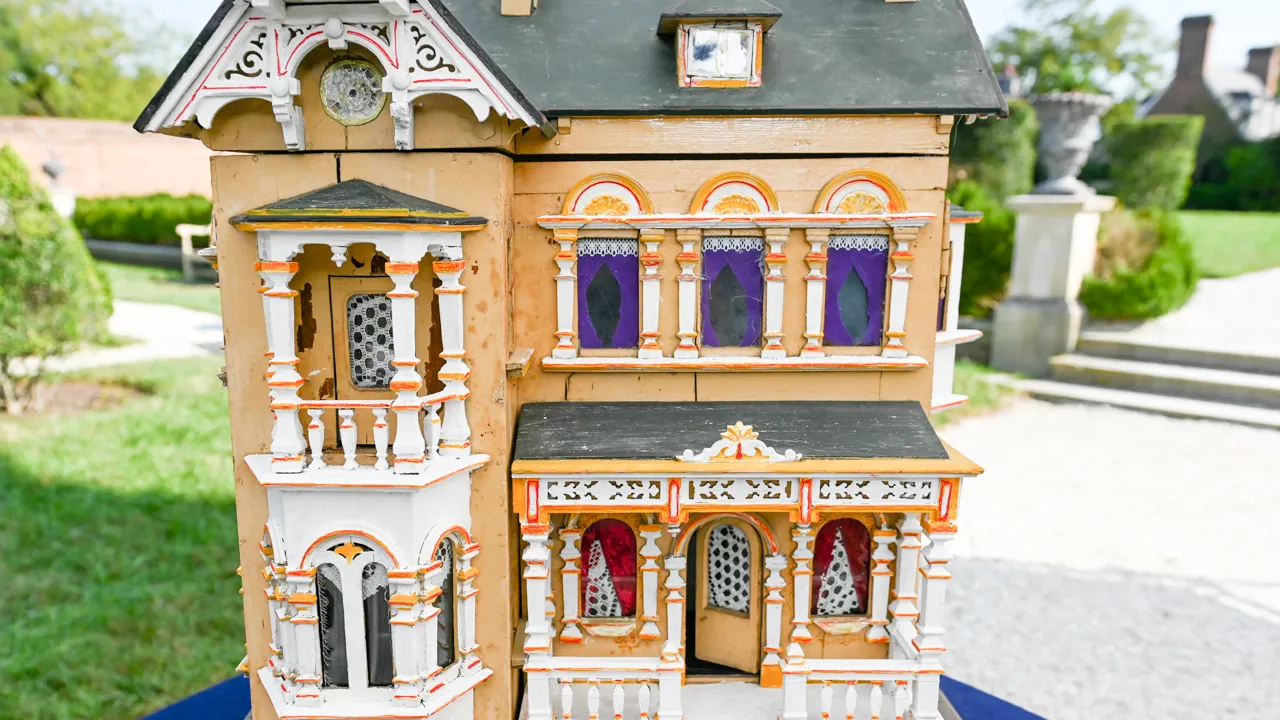Gallet Flying Officer "Red Tail" Chronograph, ca. 1941
GUEST: This is my grandfather's watch from World War II. My grandfather was a flight instructor for the Tuskegee Airmen during the war. The watch was given to me by my, my grandmother, his, his second wife. This was back in 2012. She was getting rid of some of his things, and I went to college for aviation and flew airplanes in, in college, and so I was very interested in, in the history of all this, and we're very proud of what he did during the war.
APPRAISER: What can you tell me about the Tuskegee program?
GUEST: Back during the war, African Americans were not allowed to serve in a, in a combat basis in, in a pilot setting. The program was designed and created specifically for an all-African-American group. They went down to Tuskegee and they trained, and, and my grandfather ha, happened to be one that helped teach them. From a civil rights aspect, that was a huge stepping stone in moving our country...
APPRAISER: Absolutely.
GUEST: ...beyond where, where it was.
APPRAISER: It led to the integration in 1948 of the military.
GUEST: Yeah.
APPRAISER: Your grandfather, he was there at the beginning of the program, March 1941.
GUEST: Hm.
APPRAISER: And your grandfather was there when Eleanor Roosevelt came in the end of March. It was March 29, 1941, she came to, uh, visit the program.
GUEST: Correct. From what I heard from my mother, when she had talked with him, he, he mentioned that he got to meet her when she visited the, the field.
APPRAISER: She was a wonderful civil rights activist, and she took a, a special interest in the Tuskegee program. These airmen weren't allowed to go fight in war overseas.
GUEST: Right.
APPRAISER: And I think she was a driving factor to convince her husband, the president, to, uh, send them overseas.
GUEST: Right.
APPRAISER: And as we both know, the history of the Tuskegee Airmen-- they performed really well.
GUEST: Mm-hmm.
APPRAISER: Better than their counterparts in the, uh, in the Army Air Corps.
GUEST: Right.
APPRAISER: Tuskegee is known for many things. It was known for medical experiments that were, were done on African Americans. And it's, it's just a painful time in our history of this country. But that has nothing to do with this watch here.
GUEST: Right.
APPRAISER: You have some wonderful things here. You have his pilot's logbook, his license here. And I love the book right here. Tell me about this book.
GUEST: So, this book is basically kind of, like, the yearbook of the Tuskegee Airmen. It catalogues the flight instructors at the time...
APPRIASER: Hm.
GUEST: ...the airmen, and it has them all listed in this. So it's, it's kind of an historical record, but you would have only received this if you would have been part of the program.
APPRAISER: And here's your grandfather right here.
GUEST: Yeah.
APPRAISER: Now, what rank was he here? Looks like he's a lieutenant colonel here, I would say, uh, by his insignia.
GUEST: Yeah, so, when he retired, he retired a lieutenant colonel. When he left the program at Tuskegee, he, uh, left as a major.
APPRAISER: So let's, uh, go over your watch. It was made by the Gallet watch company. The U.S. government procured watches from different companies, and Gallet was one of them that they used, and they were issued to men in the Tuskegee program. They were known as the Red Tails. They had a red tail on the planes.
GUEST: Hm.
APPRAISER: They painted them red. And this particular model by collectors is referred to as a Red Tail, also. The coloration of the dial, it's, it's turned dark. It was probably much brighter, but it's all original, which, we love that. It's hard to see, but you have, uh, a world time around it. And you have the turning bezel here. Case is made in stainless steel. The bracelet, I think it's maybe been added on later. I bet it originally had a khaki-colored canvas strap, would be non-reflective...
GUEST: Sure.
APPRAISER: ...for in the cockpit. Do you know what your, uh, grandfather got this?
GUEST: I don't. When I reached out to Gallet themselves, they said it would've been a first generation, so I would assume it would've been '41, '42 timeframe. But I don't know, honestly, for sure.
APPRAISER: It's definitely an, an early example. I know you've tried to research this. There's one thing that I suggest you do that you haven't done, and that's to contact the U.S. government. The procurement offices at that time, there should be records still to this day.
GUEST: Oh, wow.
APPRAISER: And maybe the serial number of that watch, you can find, uh, the actual order, when they ordered it.
GUEST: Okay.
APPRAISER: All these things are going to help the watch. Let's talk about values on the watch. The watch by itself would bring probably around $5,000 to $7,000 in auction. With all the documentation and the Tuskegee Airmen affiliation, the sky's the limit, but I, I would say that a, an auction estimate that I would put on it preliminary would be $50,000 to $100,000.
GUEST: Wow.
APPRAISER: It could bring double that-- we don't, we don't know what it would bring. There's no record of another one that's been for sale. Really fabulous piece.
GUEST: Wow.
APPRAISER: A real important part of our history of the United States. Yeah.
GUEST: Well, I appreciate it, thank you.

$50,000 - $100,000 Auction
Featured In

episode
Colonial Williamsburg, Hour 2
Discover more treasures from Colonial Williamsburg, including a $50K to $100K find!
20th Century

appraisal

appraisal

appraisal
Understanding Our Appraisals
Placeholder






